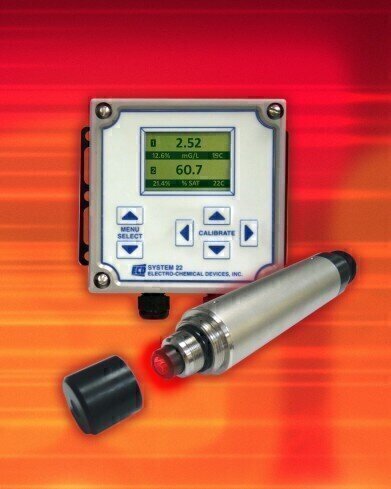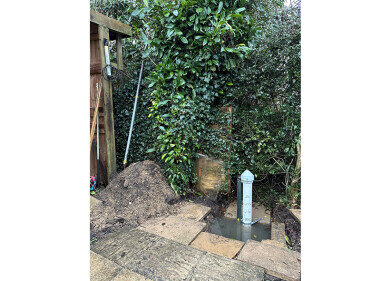Water/Wastewater
New Sensor With Optical FQ Technology Enhances Accuracy, Reduces Maintenance & Cuts Cost
Apr 24 2009
With a state-of-the-art fluorescence quenching (FQ) sensing element, the breakthrough Triton DO8 Dissolved Oxygen Sensor from Electro-Chemical Devices (ECD) (USA) delivers exceptionally accurate DO measurement with greatly reduced maintenance requirements for a low cost of ownership over a long service life in a wide range of municipal and industrial water treatment applications.
The trouble-free Triton DO8 Sensor is designed with precision FQ optical technology coupled with intelligent microprocessor-based electronics. The self-monitoring DO8 stores calibration data within the sensor, which minimizes maintenance over long service intervals while providing stable, dependable DO measurement. The highly accurate Triton DO8 Sensor features a maximum error rate of less than 2 percent, repeatability of ±0.5 percent and resolution of 0.01 ppm or 0.01 percent saturation. It operates over a wide measurement range with three different outputs from 0 to 20 mg/l (0-20 ppm), 0-200 percent saturation or 0-500 hPa (0-6 psi). Developed for rugged municipal and industrial water treatment environments, the tough Triton DO8 Sensor is designed to withstand ambient temperatures from -20 to 60°C (0-140°F) and records measurements at temperatures from -5 to 50°C (20-120°F). It withstands pressures up to a maximum of 10 bar (145 psi). The Triton DO8 Sensor relies on a proven fluorescence quenching method to determine the oxygen concentration in water. A circular layer of optically-active, oxygen-sensitive molecules is integrated into an easily replaceable cap. This durable layer is highly permeable to oxygen and rapidly equilibrates to its surroundings. The cap aligns the optically-active fluorescence layer above two optical components inside the sensor—an emitter and a detector. The sensor’s emitter flashes a green light at the layer and the layer fluoresces back a red light. The duration and intensity of the fluorescence are directly dependent on the amount of oxygen in the layer. With little to no oxygen in the layer, the response is longer and more intense. The presence of more oxygen, however, quenches (reduces) the fluorescence effect. The Triton DO8 Sensor continuously analyzes the oxygen level, water temperature and air pressure to calculate dissolved oxygen values. Via digital communications, the DO8 sends DO data to ECD’s C-22 Controller, which provides a 4-20mA output signal to a water treatment plant’s control room. The RS-485 digital signal is nearly immune to common EMI/RFI noise that is typically a problem in many plant environments.Digital Edition
IET 34.2 March 2024
April 2024
Gas Detection - Biogas batch fermentation system for laboratory use with automatic gas analysis in real time Water/Wastewater - Upcycling sensors for sustainable nature management - Prist...
View all digital editions
Events
May 03 2024 Seoul, South Korea
May 05 2024 Seville, Spain
May 06 2024 Minneapolis, MN, USA
May 13 2024 Munich, Germany
May 15 2024 Lund, Sweden


















